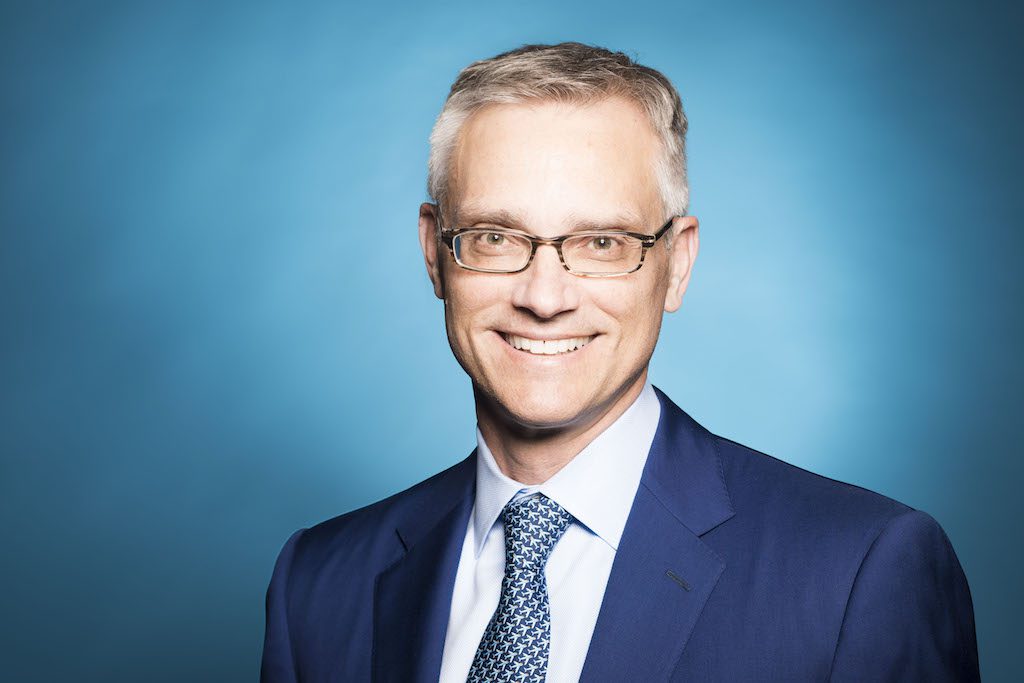Skift Take
American has spent a fortune in the past five years trying to improve passenger experience and employee relations. The airline has made many strides, but it still has work to do on both accounts.
 More than 1,100 of travel's most forward-thinking insiders will gather for our annual Skift Global Forum in New York, September 27–28. In just a few years, Skift's Forums — the largest creative business gatherings in the global travel industry — have become what media, speakers, and attendees have called the “TED Talks of travel.”
More than 1,100 of travel's most forward-thinking insiders will gather for our annual Skift Global Forum in New York, September 27–28. In just a few years, Skift's Forums — the largest creative business gatherings in the global travel industry — have become what media, speakers, and attendees have called the “TED Talks of travel.”
Skift Global Forum 2018 will take place at Jazz at Lincoln Center’s Frederick P. Rose Hall in New York. This year's Forum speakers include CEOs and top executives from Uber, Airbnb, Delta Air Lines, Hyatt Hotels Corporation, Marriott International, and many more.
When top executives at US Airways took over at American Airlines in late 2013, after the two companies merged, they did not inherit the healthiest of U.S. carriers.
American had a storied history and hubs in key cities, including New York, Los Angeles, Chicago and Dallas/Fort Worth. But it was just emerging from bankruptcy, and in the previous decade invested less than it should have in its onboard product and airport experience. It also had troubled relations with employees, and in many cases, its frontline employees did not trust management.
The new executive team, led by CEO Doug Parker and President Robert Isom, both US Airways veterans, has spent much of the past five years seeking to bring a more nimble approach to what is now the world’s largest airline.
On the product side, they have had some success spending billions on passenger experience, though the airline has not always moved as fast with aircraft retrofits and terminal construction as some customers would like. Fixing employee relations have proved more difficult, with some workers still resenting management for cuts, such as post 9/11 furloughs and wage cuts, that happened years ago.
Now, American’s top executives have a new challenge. After leading the company to record profits at low fuel prices, they must decide how to alter the airline’s strategy as costs rise. They’ve already made tough cuts — later this year, American will stop flying from Chicago to Beijing and Shanghai — but they have said they may need to make make more tweaks to ensure long-term stability. The good news is that global travel demand remains strong, and American expects to keep growing capacity, just by less than it had expected.
Isom, who took over as American’s president in 2016 after serving as chief operating officer, will speak Thursday at the Skift Global Forum in New York City. Here’s a preview.
Skift: Fuel costs are up considerably, year-over-year. How is this affecting American’s strategy?
Robert Isom: No doubt, fuel is really a big expense for American. If fuel prices had remained at 2017 levels, they would be $2 billion lower in 2018 than they are. We have to take a look at what that means for the business. You’ve seen us make some adjustments in the network, both in Asia and Latin America. If fuel is going to remain at $80 a barrel, $75 a barrel, then that’s something that we have to be able to be able to react to. We’re doing that. We’re doing it in the short run and we’re planning the airline for the future so that we have an airline that will be profitable into the future with oil at $75, $80 a barrel.
The great news for us is that the hub network that we have is performing well and and the adjustments that we will be making are going to ensure profitability long into the future. It’s a cyclical business. The kind of things that we are trying to do with segmentation and offering a product that appeals to customers at every price point is working. We’ve had consistent quarterly year-over-year improvements in revenue. I think we’re taking all the right steps.
Skift: You mention segmentation. This is the idea of having a product for every type of passenger, from the most cost-conscious to the least. Why is this so important for an airline?
Isom: It does let us offer a product to every person along the demand curve. We’ve got a first class domestic product. We’ve got a Main Cabin Extra. We’ve got a economy product and then we have a basic economy product as well. And so for those that are really, really price conscious, the benefits and the amenities [of basic economy] are still far superior than the ultra low cost carriers offer. [Then you have ] the most frequent flyers, and those road warriors really like the extra amenities.
It’s not just in the cabin, but it’s also in the airports as well, with the tremendous investment we’ve made in our flagship lounges, and at most [Admirals] clubs. There’s an offering for every person along the way. We’ve seen really consistent improving demand for those products that you consider up-selling. We’re pleased with how things have gone.
Skift: We hear a lot of airline U.S. executives talk about how the industry is stronger than ever, despite the run-up in fuel prices. Do you agree?
Isom: I feel great about American Airlines. We’ve invested an incredible amount of money over the last five years, $25 billion — billion with a B — in aircraft and in retrofitting existing fleet, and lounges, in airport facilities, in facilities for our team members, in equipment for our team members. It’s been the largest investment in the history of commercial aviation over the last five years. And American is uniquely poised to take advantage of that as we go into the future. We’ve been laser-like focused on making sure this airline was integrated and ran well, post merger. And we’ve got some of the final steps in integration coming up this fall and into next year. But as we look, going forward, there’s nothing stopping American Airlines.
Skift: We often hear the domestic business is performing well. But what about the rest of the world?
Isom: We’re fortunate to have a very large presence in a thriving domestic marketplace. We’re doing really well, when you look at our partnerships and our business in Europe, our partnership with [International Airlines Group] and specifically [British Airways] in London-Heathrow. We have done a lot of work to make sure that we have the appropriate Asia network. And the partnerships that we have with Qantas and Cathay [Pacific], the investment with China Southern and then the [joint venture] with Japan Airlines. We’ve got the best partners imaginable in Asia. And then we’re looking for Latin America to rebound. We’ve got the largest footprint of any carrier in Latin America. It’s a cyclical business and we’re confident that Latin America will rebound as well.
The Daily Newsletter
Our daily coverage of the global travel industry. Written by editors and analysts from across Skift’s brands.
Have a confidential tip for Skift? Get in touch
Tags: american airlines, robert isom, sgf2018, skift forum, skift global forum
Photo credit: American Airlines President Robert Isom is guiding the carrier's response to higher fuel prices. American has already cut a few of its longest routes. American Airlines
